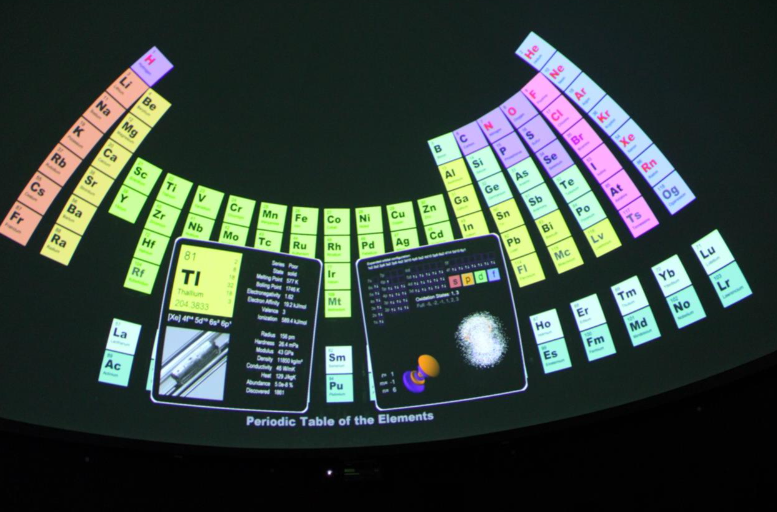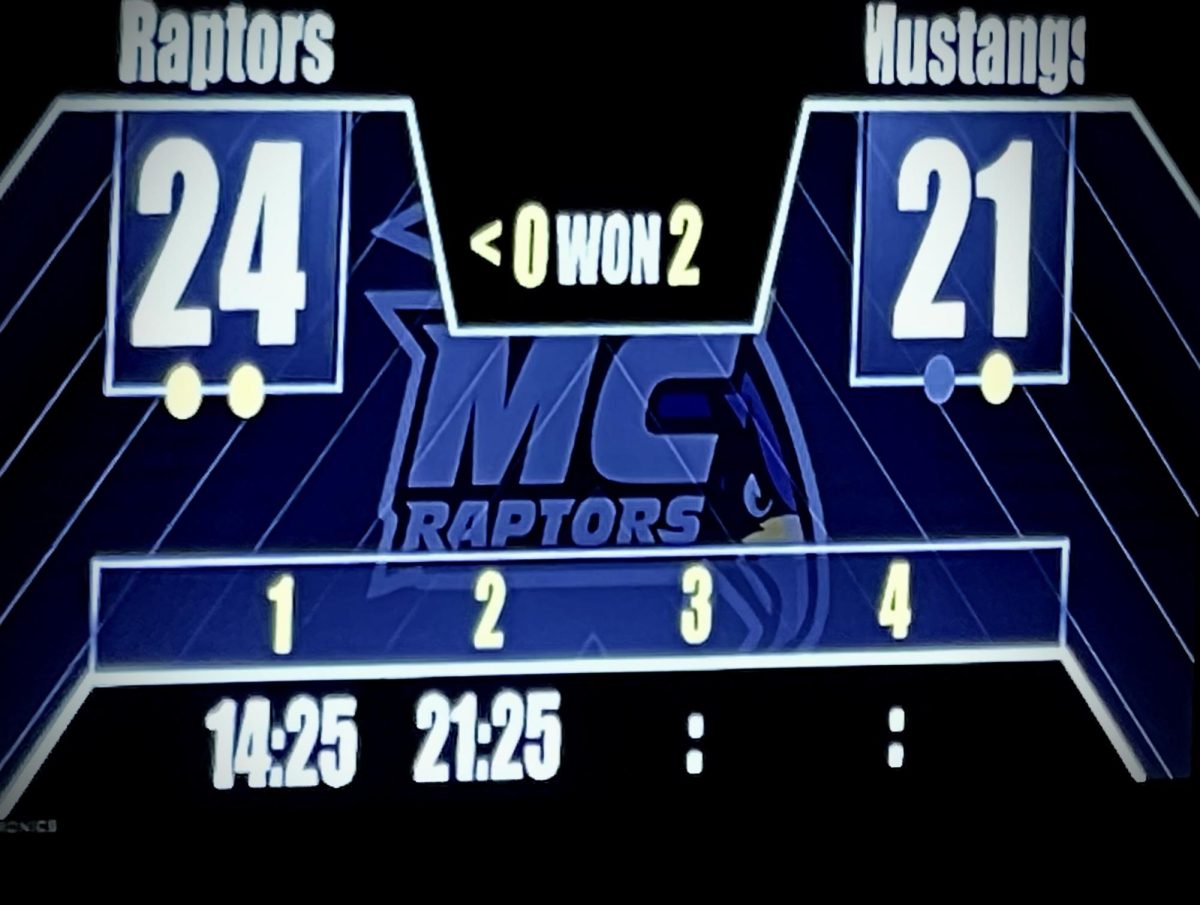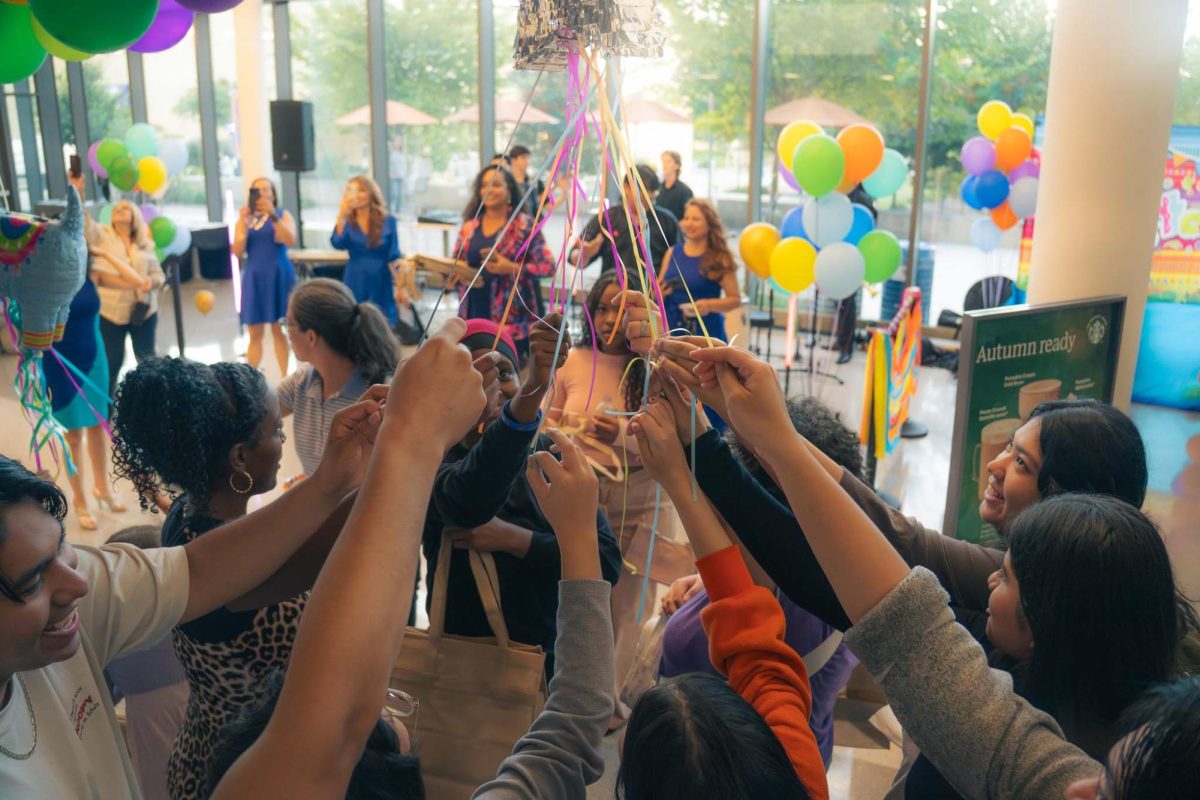The Launch of Montgomery College’s New Planetarium
By: Danae Samantha Flores-Tene
Within the myriad of innovative academic resources becoming available at Montgomery College, the planetarium recently opened at the Takoma Park/Silver Spring campus introduces an opportunity for astronomical observation. Located in the new Catherine and Isiah Leggett Math and Science Building, the state-of-the art facility not only enhances the institution’s commitment to science education, but also stands on a mission to cultivate a sense of curiosity and wonder.
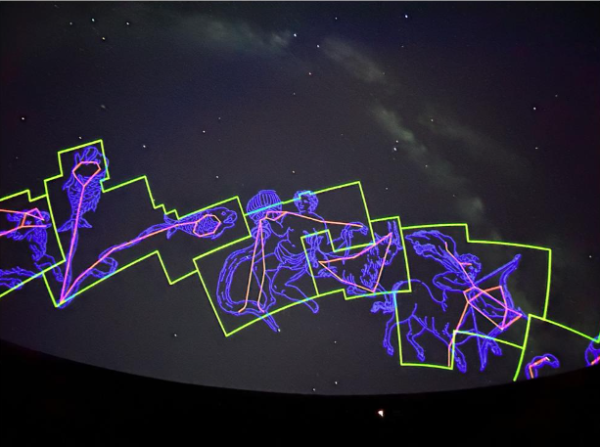
Digistar 7: A Cutting-Edge Learning tool
Dr. Carrie Fitzgerald, Professor of Astronomy and Director of the Montgomery College Astronomical Observatory, shared her knowledge on the technical features this freshly inaugurated facility has to offer, as well as her vision for the project. According to Dr. Fitzgerald, the planetarium system being used is called Digistar 7, consisting of two projectors that merge images together on a 360-degree dome, offering an immersive learning experience with high resolution imaging. Digistar 7 has a unique ability to project our night sky from any location on Earth and at any time of the year. This system can project the sky thousands of years back and even thousands or billions of years into the future. Dr. Fitzgerald states that with the planetarium’s “visual capability to fly around all the planets and even beyond our solar system, we’re able to take you from the center of the sun to the edge of the universe.”
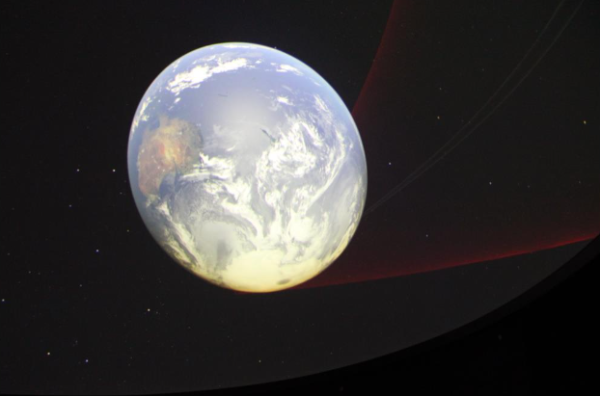
Real Time Observations
As we live in a universe that is constantly changing and as our sky is being observed differently with respect to our location, our time zone and our precise position on Earth, a feature that has become incredibly useful is its connection to the Digistar Cloud Library, allowing the system to update consistently for real-time observations and accurate visuals of the sky. With the use of this feature, educators from around the world can also collaborate and share their programming, observations, and creations. As Dr. Fitzgerald has also shared, the James Webb Telescope, a NASA-operated observatory that studies the history of the universe from the Big Bang to the formation of our solar system, is another amazing tool available on the system, allowing us to map the galaxies of the universe.
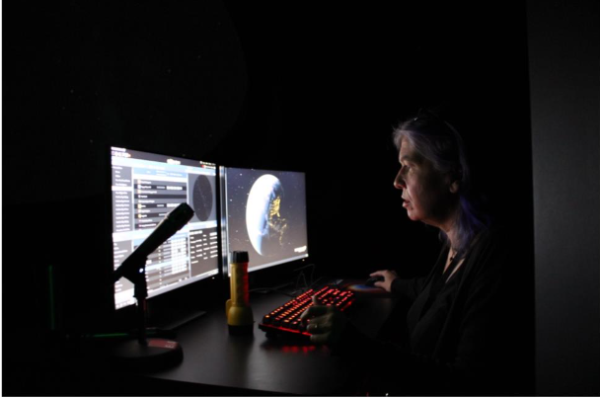
Bringing Astronomy to Life for Students
For approximately 15 years, Dr. Fitzgerald has taught astronomy and physics courses at Montgomery College in traditional classrooms with the use of PowerPoint slides during her lectures. Nevertheless, a vital part of studying these subjects is carefully understanding the motion of objects in the night sky and the celestial mechanics surrounding said movements. Having the opportunity to teach in a space that simulates the night sky now allows her and her fellow faculty members to accurately project horizon lines, our celestial equator, the meridian and ecliptic lines, our planets, the stars, and constellations on the dome, ultimately creating a more engaging lecture for their students. The program also allows users to fast forward time at their desired speed and demonstrate how all objects in the sky are moving in real time ultimately “immersing you in a way that just can’t be done when you’re in a traditional classroom,” says Dr. Fitzgerald.
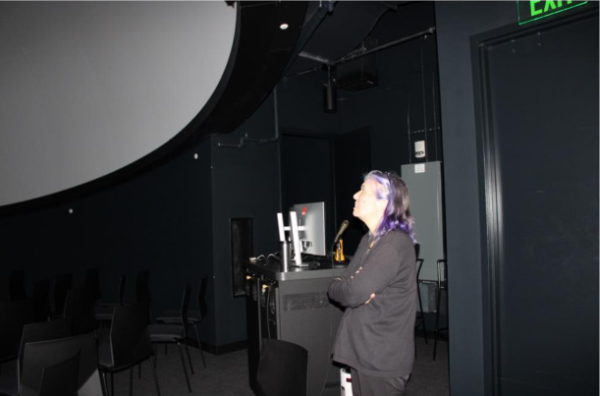
Future Opportunities
Her hope for the future is to also develop internship opportunities for students and conduct small research programs where she can provide the opportunity to develop their own programming and eventually share or collaborate with the wider planetarium community around the world. As she is currently the only faculty member who holds the necessary expertise to run the planetarium correctly and safely, her objective is to eventually offer certification programs for students at Montgomery College to gain the necessary experience to successfully operate the software of the planetarium, thereby sharing her own knowledge and have students help with opening and managing this space.
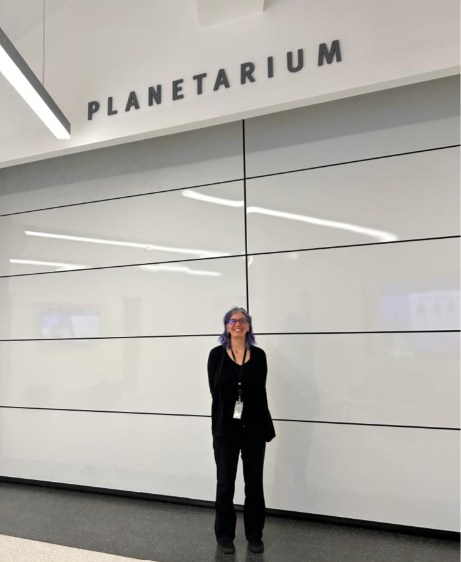
Interdisciplinary Applications: Beyond Astronomy
In addition to the astronomy capabilities, this projector has built-in functionality for other subjects. This is where Dr. Fitzgerald introduced another one of her major goals: interdisciplinary functionality; in the sense of bringing in students from distinct majors at MC and make use of the planetarium for all educational purposes, going above and beyond the subject of astronomy. Dr. Fitzgerald delved into the multiple uses she has in mind for the facility. “Imagine an Art History Class using this enormous dome where you can project enormous oil paintings and obtain close-up visuals; we can have physics simulations, and we can even go as far as projecting atomic and molecular structures where students get access to a greater visual and even rotate them around,” stated Dr. Fitzgerald.
Additionally, Dr. Fitzgerald shared an experience from earlier in the semester when nursing students expressed an interest in the projector to get a close-up visual at the human anatomy. The possibilities are endless and as Dr. Fitzgerald noted, there’s “material from a host of subjects that we can tap into.” She would also love to see students simply using the space for fun, with an infinite number of ways to make use of the dome such as movie projections and perhaps karaoke events considering the built-in sound system.
Engaging the Broader MC Community
Whether you are pursuing a career in science or simply someone curious about the night sky, this facility offers a unique opportunity to deepen our understanding and appreciation of astronomy. As Dr. Fitzgerald emphasizes, this resource is open to the Montgomery College community, regardless of major or intended career path. Knowing that many students who are currently enrolled or will be enrolled in an astronomy course in the future may not necessarily be interested in following this route, it is still an opportunity to broaden our knowledge of the universe we live in. As Dr. Fitzgerald stated, “if I can make people even a bit excited or spark their interest, I will have done my job”.
Awe and Wonder
By sharing a reference to her most recent reading, “Awe: The Science of Everyday Wonder and How it can Transform Your Life” by Dacher Keltner, Dr. Fitzgerald highlighted how much more alike we are than we think. With so much division in the world, she sees astronomy as a way of changing the world order so that we become a kinder, gentler, happier world. The simple act of feeling awe and wonder and then sharing it among the people around us can eventually change us for the better. Dr. Fitzgerald emphasized, “if I can, in some small way, use awe and wonder, and apply this idea that the universe is beautiful and wonderful place and we all have a part in making it better, then why not?”
Upcoming Events
There are many new and exciting events coming up this fall semester, including Live Planetarium Shows titled “Navigate the November Sky” and “The Sky through the Ages” happening throughout November and December. The events are free yet require guests to make a reservation via UBMe due to the occupancy limitations of the Planetarium. Register here: https://www.ubmeevents.com/39923~carriefitz.
Exploring New Opportunities
Dr. Fitzgerald wishes to host a variety of events ranging from artistic performances to possibly “Meditation Mondays” where guests would be able to come in to “hang under the stars and get a little peace and relaxation before they get the week started”. As a final recommendation from Dr. Fitzgerald, “take classes out of your comfort zone, see what you and what you don’t. It’s good to explore and take different pieces from your world and bring them together”.
This story was written by Danae Samantha Flores-Tene, a current student in Dr. Fitzgerald’s Astronomy 101 course.


